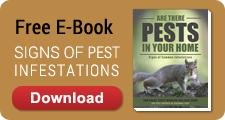Question
For the last few days, I have been finding white worms crawling around my kitchen. They’re about ½ inch long. I’ve probably found about 20 of them and they’re starting to freak me out. Can you tell me what they are and what they’re doing?
Answer
If the “worms” are limited to your kitchen and are crawling up walls and along ceilings, it’s a good bet that they are Indianmeal moth larvae. The other white worms (in that size range) that can be found in kitchens are fly maggots, but those do not have legs. Maggots wiggle along; they can’t crawl. Indianmeal moth larvae have a brown head while fly larvae have no noticeable head. Indianmeal moth larvae have the typical caterpillar shape, but they are small (about ½ inch long, as you said) and almost hairless. You should have a pest control company confirm the identification though.
Read more : My Kitchen Faucet Won’t Turn Off
The reason the larvae are crawling around your kitchen is that they are fully grown and are looking for protected places to pupate so they can turn into adult moths. They have the habit of leaving the food in which they have been feeding (probably on your kitchen shelves or in the pantry) when ready to pupate. They usually crawl upward, often ending up in a wall/ceiling corner or a crack, where they spin a silken cocoon. Sometimes they will pupate at the top of the same cabinet where they have been feeding, or even in the food material itself.
The tricky part, once you have confirmed that they are Indianmeal moth larvae, is finding out where they came from. You’ll probably need a pest control expert’s help here, too, since Indianmeal moth larvae can feed on many different things and you may have multiple infested sites.
3 Tips on How to Find Infestation Areas
Here are a few tips on how to find the moth larvae infestation sites:
- Check “old” foods first, those boxes and bags that are rarely used, have been on the back of the shelf for a long time, or are past their use-by date. Keep in mind that Indianmeal moths can be found infesting even unopened packages.
- The most common infestation site for Indianmeal moth larvae in homes is dry pet food, which may or may not be stored in the kitchen. Other most likely food sources are coarse-milled grain products like cornmeal (Indian meal), wheat or graham four, or cereals.
- Infested foods will be covered with irregular silken webbing spun by the feeding larvae. You may also find larvae, shed skins, droppings, even adult moths in the food package. If you think about it, you might realize that you have been seeing some small moths fluttering around near your kitchen.
Read more : Base cabinets, frame height 30"
Even after you find and discard the infested foods, there’s the chance that adult moths may have laid eggs in other food products. So any susceptible foods should be thrown out or at least stored in airtight containers. Your pest control technician can treat shelves and other areas to kill any new larvae that may hatch, and can advise you on how to “moth-proof” your kitchen and pantry.
If you have any of the above problems, contact Colonial Pest for a free quote, or call us at 1-800-525-8084 right now!

Source: https://gardencourte.com
Categories: Kitchens
